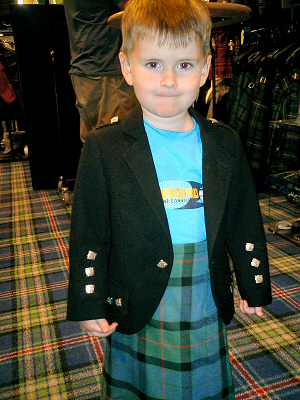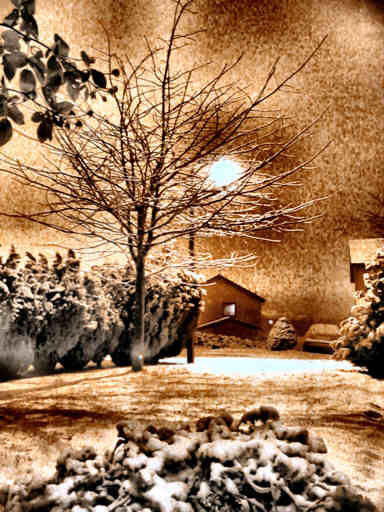We got Alex measured up for a kilt today. My cousin Cameron is getting married at the end of September, and of course all the Sutherland men have to be dressed appropriately for the event.

No gods, no kings, no billionaires
We got Alex measured up for a kilt today. My cousin Cameron is getting married at the end of September, and of course all the Sutherland men have to be dressed appropriately for the event.

While we were picking up Kathleen from the airport today, we had some time to kill. We all bundled into a photo booth, and…


I love snowfalls at night. I love the unreal glow of cloud cover lit from below. I love the muffled stillness, and the whuffing crump of fresh snow. I love the frozen peace, and the cool sensation of thick snowflakes settling gently in my hair.

The image was generated with Paint Shop Pro 8, using my watercolour effect technique. Alternative versions:
Since buying a digital camera in 2000 (an Olympus C3000 Zoom) we haven’t really looked back on analogue photography. Although we had bought a brand new APS camera in 1999, it disappeared into a dusty drawer as soon as we’d tested the digital waters. Earlier this year we even bought a second digital camera, a superslim Casio Exilim EX-S2.
The Olympus is a great all-round camera, and takes superb landscape shots, but it is quite bulky to carry around. The Casio is a snapshot camera. It’s great for people pictures, it’s tiny enough to slip into a pocket without spoiling the line of your trousers, and it turns on almost instantly. It’s rubbish at doing landscape or architecture shots, but that’s okay, because that’s not what we use it for.
A couple of months ago, however, we had a little accident with the Casio. The result was a cracked LCD screen, an £80 repair bill, and about four weeks without the camera.
Normally this wouldn’t be a problem, as we still had the Olympus, but it so happened that in those four weeks, Abi was away on her own for a bookbinding conference, and Alex and I were up in Aberdeen visting my grandmother. Abi ended up taking the Olympus down South with her, and Alex and I brought our quaint old APS device: a Canon Elph 260Z.
Now, when APS (“Advanced Photo System“) first arrived on the scene, I thought it was pretty cool:
The down side of APS is that it doesn’t have the same picture resolution as 35mm film. The negative is only about half as big, which means (in digital terms) that it has half the pixels. It’s like taking a picture with a 4 Megapixel camera vs a 2 Megapixel camera: you’ll be able to blow up the 4 Megapixel image to a much greater size before the individual pixels become visible. (The “grain” of the film, in analogue terms.)
To be honest, we never took enough pictures with the Canon for this downside to become noticeable. Migrating from 35mm to APS seemed like a step forward.
Moving from digital back to film photography, however, is an enormous pain in the ass:
All this adds up to one result: if you’re used to digital, you won’t ever want to go back to APS. 35mm, despite being the older technology, is actually much more suited to the digital age.
One for the Mirror Project?
Alex is getting very heavy to be carrying him around in my arms while he’s sleeping. But it feels very nice to have his warm head resting on my shoulder.